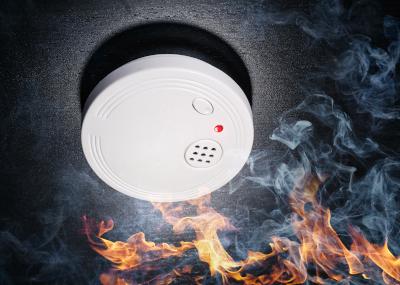
Smoke Alarm Safety
Every day in the United States 1,500 homes catch on fire. Each year 4,500 people die and 280, 000 are injured in residential fires. The majority of fire deaths occur at night, while everyone is asleep.
The Fire Department, through a partnership with the Anne Arundel Fire Safety Foundation, can provide assistance to any citizen that cannot afford to purchase a fire alarm or needs help installing one.
Types of Smoke Alarms
Ionization
A radioactive material is used to ionize the air in the sensing chamber. Smoke entering the chamber activates the alarm.
Photo Electric
Works much like an electric eye on an automatic door. When smoke enters the chamber, the electric eye sees it, which activates the alarm.
How are they powered?
Battery
The easiest to install because they do not require any connection to the home’s electrical system. The challenge with these alarms is they require the battery to be replaced periodically for the unit to work.
A/C Hard Wired without battery
These alarms are wired directly to the homes electrical system. These alarms do not operate if there is a power outage.
AC hard Wired with battery backup
this is the best way an alarm can be powered. If the battery dies, it will still be powered by the home’s electrical system. And if there is a power failure, the battery will continue to operate the alarm.
How should they be installed?
Follow the manufacturers recommendations on proper placement. Avoid areas within 6 inches of where the ceiling meets the wall. The smoke will rise along the wall and curve to the ceiling delaying or never activating the alarm.
Proper Maintenance:
- Check the power supply once a month by pressing the test button
- Change the batter at least once a year
- Remove cobwebs, insect, or dust by vacuuming at least every six months
- National Fire Protection Agency (NFPA) recommends changing any smoke alarm that is 10 years or older
Need Assistance?
If you have questions about smoke alarms or need alarms and can't afford please contact your closest fire station for assistance.
Smoke alarms can be provided for free and will be installed by Fire Department personnel. When available, State and federal grants are used to provide visual smoke alarms for the hearing impaired.
